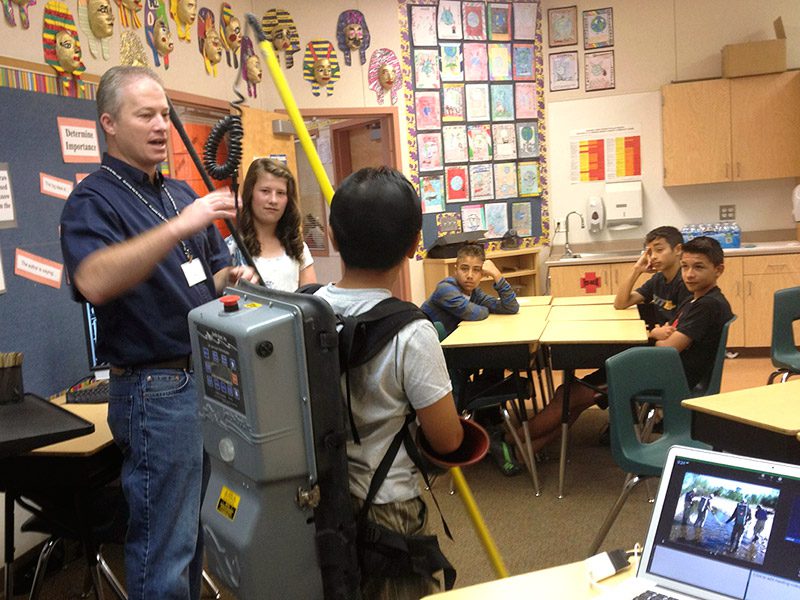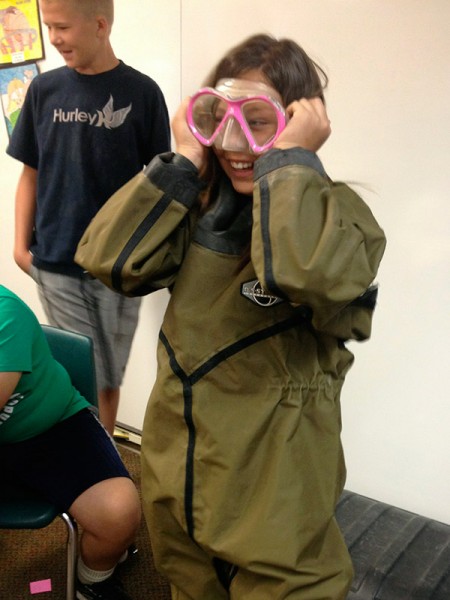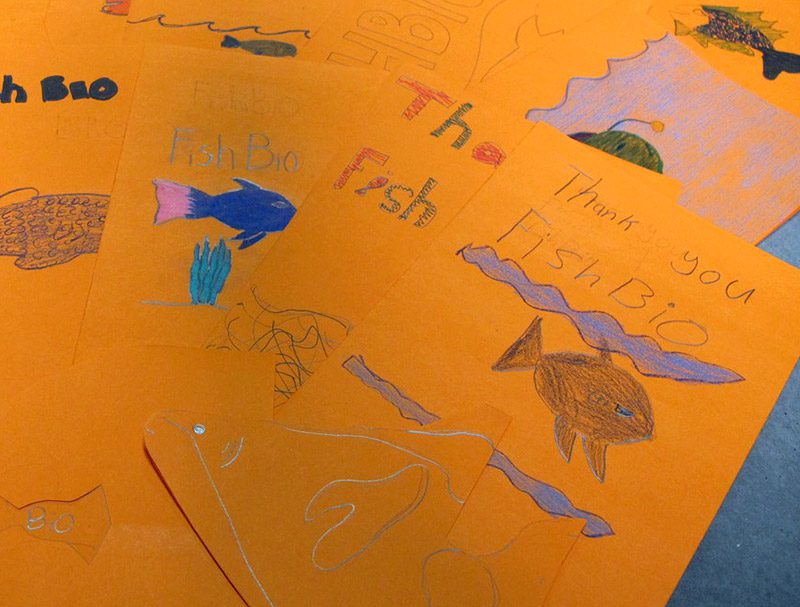Friday May 31, 2013

Summer is almost here, but FISHBIO staff recently found ourselves heading back to school. We gave a presentation about our work to four groups of sixth graders at an elementary school in Oakdale as part of their annual Agricultural Day. In keeping with the Ag Day theme, we drew the connection between people and fish through our shared need for water. More than 90% of the average Californian’s water footprint goes toward producing the food we consume (see What’s your water footprint?). While water is undeniably important for agriculture, it also means everything to fish. We talked about the importance of sharing this precious natural resource, and helped the class visualize their place in the watershed along the Stanislaus River, a tributary of the San Joaquin River. We also traced the amazing journey that young salmon make from Oakdale to the ocean – a trek of 165 miles!
Most students were well versed in the salmon life cycle, and the majority had seen salmon spawning upriver at Knight’s Ferry as part of their fourth grade curriculum. One student even pointed out that our photo of a steelhead was a great example of countershading, an adaptation that helps fishes hide from predators and prey. The fishes’ dark backs make them hard to spot when looking down on them from above, while their silvery bellies make them blend into the sunlight when looking up from below. It’s nice to know that at least a few facts get retained between fourth grade and sixth grade.

Things got exciting once we asked for volunteers to model the sampling gear we lugged into the classroom. A few brave models hoisted a backpack electrofisher on for size. We had removed the bulky battery, which greatly lightened the load, and also prevented any in-class zapping, accidental or otherwise. Other students struggled their way into the clinging booties and rubber cuffs of a snorkeling dry suit. Hopefully the experience will encourage our audience members and participants to consider field-based careers. Judging from the bright stack of thank-you cards we received, there may be some budding fisheries biologists among the bunch—or at least some fish artists!

